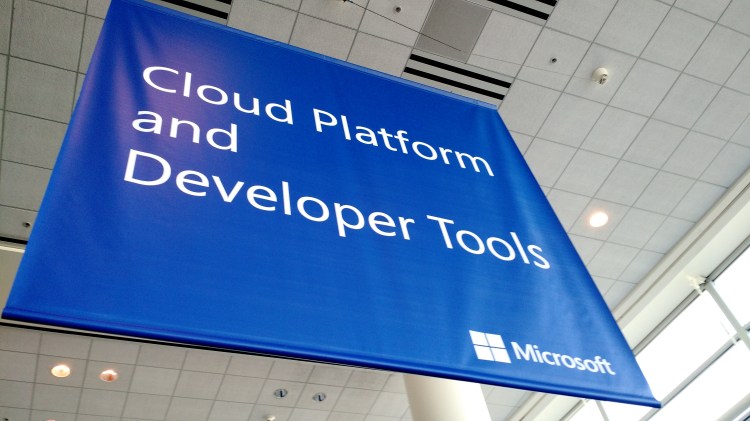Microsoft is taking more steps to abstract away the nitty-gritty of managing cloud infrastructure for running apps. Today the tech giant announced a preview for the deployment of virtual cloud resources with templates through the Azure Resource Manager.
Last year Microsoft debuted Azure Resource Manager, which gives engineers a place to deploy certain kinds of cloud infrastructure. At the time, Microsoft issued a template language for Resource Manager. Now there are actual templates to work with.
“With today’s announcement, templates include Virtual Machines, Virtual Networks, Availability Sets, Network Interfaces (NICs), Storage Accounts, Load Balancers, Network Security Groups, and Public IPs,” Corey Sanders, director of program management for Microsoft Azure, wrote in a blog post on the news, which followed plenty of other developer-oriented news coming out of Microsoft’s Build conference in San Francisco.
The public preview of this template deployment model starts today, in Microsoft Azure’s East US, West US, West Europe, East Asia, and Southeast Asia regions, Sanders wrote.
June 5th: The AI Audit in NYC
Join us next week in NYC to engage with top executive leaders, delving into strategies for auditing AI models to ensure fairness, optimal performance, and ethical compliance across diverse organizations. Secure your attendance for this exclusive invite-only event.
This system follows the announcement earlier this month of Azure Service Fabric, a platform-as-a-service (PaaS) cloud for microservices — pieces of applications that can all work together and can be rapidly updated to meet business needs. Rather than focusing on building applications, the templates could come in handy at a later stage: handling underlying infrastructure for applications.
Meanwhile other cloud providers have been aiming to deliver abstractions and convenient control points for infrastructure. The Google Cloud Platform, for example, has been focusing on providing a dial for developers to turn between a high degree of choice, with raw cloud infrastructure from the Google Compute Engine — and a much lower degree of choice, particularly through its Google App Engine PaaS. Market-leading public cloud Amazon Web Services, too, is thinking about abstraction away from raw compute power and storage, announcing in November its event-driven computing service,
From a broader perspective, these proprietary services could boost productivity for people tasked with application development and deployment — and those people could be less inclined to moving their applications to other clouds.
Not that Microsoft is only concerning itself with proprietary tools in its cloud strategy. The company today announced support for the Cloud Foundry open-source PaaS.
As for the templates, people can work with them in a variety of ways: a JSON-compatible text editor, the Azure Portal, through the GitHub source-code-repository software, or in Microsoft’s Visual Studio software with the Azure software-development kit.
“Today’s release will allow you to create everything you need for a complex application using a simple file that you can check-in and collaborate on,” Sanders wrote. “It also allows these distinct resources to be deployed following a specific dependency chain and allows passing of parameters between resources, where required.”

